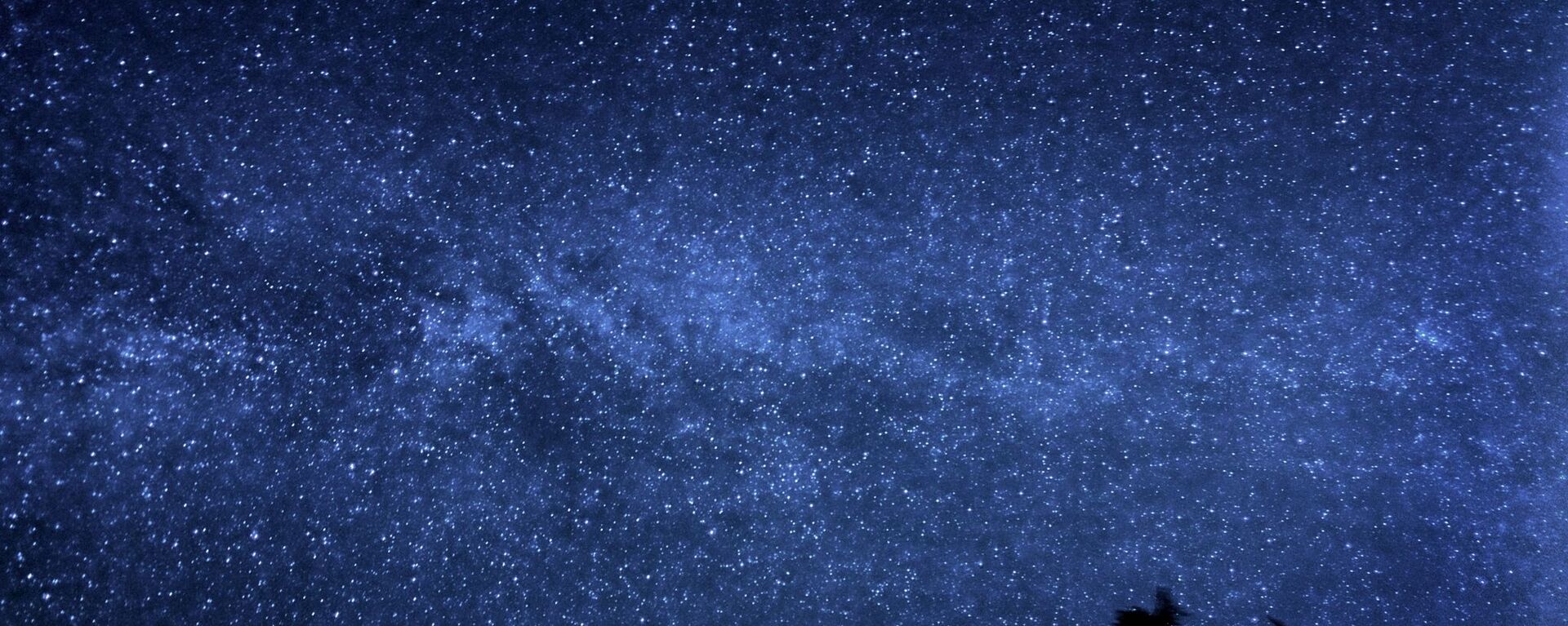https://sputnikglobe.com/20220219/milky-way-swallowed-up-undiscovered-galaxy-over-eight-billion-years-ago-reveals-esa-gaia-spacecraft-1093178860.html
Milky Way Swallowed Up Undiscovered Galaxy Over Eight Billion Years Ago, Reveals ESA Gaia Spacecraft
Milky Way Swallowed Up Undiscovered Galaxy Over Eight Billion Years Ago, Reveals ESA Gaia Spacecraft
Sputnik International
Over the last 13.6 billion years, our Milky Way galaxy has collided with, and consumed, other galaxies. However, astronomers’ knowledge of the process has... 19.02.2022, Sputnik International
2022-02-19T13:35+0000
2022-02-19T13:35+0000
2022-11-03T19:34+0000
universe
max planck institute
gaia
milky way
https://cdn1.img.sputnikglobe.com/img/104586/21/1045862112_0:58:1024:634_1920x0_80_0_0_fbe63aa8feb6605783a842b3d077eb92.jpg
Astronomers working with data from the The Gaia probe of the European Space Agency (ESA) have discovered evidence of a previously unknown ancient galaxy that was consumed by the Milky Way some eight to 10 billion years ago.The team, led by Khyati Malhan of the Max Planck Institute for Astronomy in Germany, was mapping six satellite galaxy mergers with our home galaxy – the Milky Way, creating an atlas of sorts: five such collisions were already known to researchers, while a sixth has been newly-discovered.Previous studies had reconstructed such mergers "by hand", but the new study, the results of which were published in the Astrophysical Journal, applied a systematic statistical evaluation of 257 stellar streams, globular clusters and satellite galaxies, using data provided by ESA's Gaia mission.The scientists were able to do this after the early version of Data Release 3 (EDR3) of ESA's Gaia mission, launched in 2013, became available on 3 December 2020.Gaia provides astrometric data for more than a billion stars, offering accurate locations as well as information about their position changes in the sky.For their study, the researchers computed the action variable values from the Gaia EDR3 data for a total of 170 globular clusters, 41 stellar streams and 46 satellite galaxies.It was in the course of their analysis that the team discovered a merger that had been completely unknown. They named the early merger, and the galaxy that merged with our home galaxy at the time - Pontus.The new results are an important step towards a more complete reconstruction of our galaxy's billion-year history, its growth, evolution, and the origins of the stars lying within.
https://sputnikglobe.com/20210625/ai-data-from-gaia-detects-stream-of-lost-stars-extending-thousands-of-light-years-across-milky-way-1083239089.html
milky way
Sputnik International
feedback@sputniknews.com
+74956456601
MIA „Rossiya Segodnya“
2022
News
en_EN
Sputnik International
feedback@sputniknews.com
+74956456601
MIA „Rossiya Segodnya“
Sputnik International
feedback@sputniknews.com
+74956456601
MIA „Rossiya Segodnya“
universe, max planck institute, gaia, milky way
universe, max planck institute, gaia, milky way
Milky Way Swallowed Up Undiscovered Galaxy Over Eight Billion Years Ago, Reveals ESA Gaia Spacecraft
13:35 GMT 19.02.2022 (Updated: 19:34 GMT 03.11.2022) Over the last 13.6 billion years, our Milky Way galaxy has collided with, and consumed, other galaxies. However, astronomers’ knowledge of the process has remained incomplete, particularly with regard to the total number of mergers and their dynamical properties.
Astronomers working with data from the The Gaia probe of the European Space Agency (ESA) have discovered evidence of a previously unknown ancient galaxy that was consumed by the Milky Way some eight to 10 billion years ago.
The team, led by Khyati Malhan of the Max Planck Institute for Astronomy in Germany, was mapping six satellite galaxy mergers with our home galaxy – the Milky Way, creating an atlas of sorts: five such collisions were already known to researchers, while a sixth has been newly-discovered.
Previous studies had reconstructed such mergers "by hand", but the
new study, the results of which were published in the Astrophysical Journal, applied a systematic statistical evaluation of 257 stellar streams, globular clusters and satellite galaxies, using data provided by ESA's Gaia mission.
The scientists were able to do this after the early version of Data Release 3 (EDR3) of ESA's Gaia mission, launched in 2013, became available on 3 December 2020.
Gaia provides astrometric data for more than a billion stars, offering accurate locations as well as information about their position changes in the sky.
For their
study, the researchers computed the action variable values from the
Gaia EDR3 data for a total of 170 globular clusters, 41 stellar streams and 46 satellite galaxies.
It was in the course of their analysis that the team discovered a merger that had been completely unknown. They named the early merger, and the galaxy that merged with our home galaxy at the time - Pontus.
"The dynamical atlas of the Milky Way mergers that we present here provides a global view of the galaxy formation in action. Thus, our study contributes to the initial steps of unravelling the full hierarchical build-up of our galaxy, and also understanding the origin of the globular clusters and stellar streams of the Milky Way halo," the researchers wrote in their paper.
The new results are an important step towards a more complete reconstruction of our galaxy's billion-year history, its growth, evolution, and the origins of the stars lying within.


